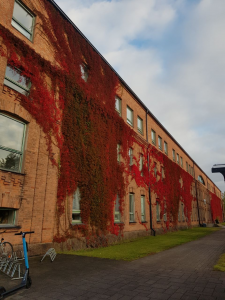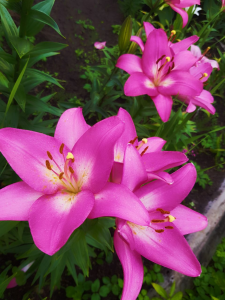
Psychology of color perception
Vol. 25, Issue 07, 4 November 2022
Color is a visual, subjective perception of visible light by a person, differences in its spectral composition, felt by the eye. The source of all colors is the Sun.
Each color in psychology has a different effect on consciousness and has a meaning. Warm colors excite, create a mood of comfort, and cold colors cause people to feel close and detached. Color can have a fleeting physical, and with a long look — a mental impact. Psychologists say that a favorite color can tell a lot about a condition and personality traits, color also affects mood. You can even determine the character by your favorite color.
Red color

The most active. It is a rich, heavy, hot, bright color. It symbolizes love, power, and fire. Light shades of red are exciting, dark gives solidity. It gives people willpower and helps them cope with life’s difficulties and trials. But sometimes all this leads to emotional exhaustion. The University of Leeds has proved that color has a direct effect on a person. Red lighting can speed up the heartbeat and increase blood pressure.
Green color

Rich, calm, fresh, gentle, lively. It has a calming effect. It symbolizes peace, love, and salvation. It is widely distributed in the wild. For many, green is spring, youth, and tranquility. It pacifies, lifts the mood, and motivates action. Fans of the green spectrum are avid travelers. Most plants are green because they contain the pigment of photosynthesis — chlorophyll (chlorophyll absorbs a large proportion of red rays from the solar spectrum, leaving a reflected and filtered green color for perception). Animals with a green color use it to camouflage against the background of plants.
Purple color

Intense, cold, heavy, calm, mysterious. It symbolizes wisdom, maturity, and higher intelligence. Purple is chosen by individualists — people who always strive to attract attention to their personality in everything. They are proud, self-confident, independent, and strong. But at the same time, they are often romantic and vulnerable. Relaxes relieve stress and promote rapid falling asleep with a night of deep and restful sleep. It also helps to get rid of anxiety and allows you to look at problems from the other side, and return to inner harmony. Accelerates the recovery of health after operations or serious injuries, including mental ones.
Yellow color

In psychology, it always means positive, joy, and other positive emotions. It belongs to the warm spectrum, promotes increased activity, and energizes. In addition, it improves overall well-being. It also affects several physiological processes occurring in the body:
1) improves vision
2) reduces blood pressure
3) improves the activity of the nervous system
4) helps to increase muscle tone.
Thus, color greatly affects people, their perception of information, and their characters. It can help them, but also harm them. The predominance of any color (or combination of colors) in the design of the room creates a certain emotional and business environment. It is known that the color scheme of the interior affects the subconscious of a person, the perception of information, and their characters. Our perception of color is influenced by many factors, including various associations and cultural, religious, and political symbols accepted in society.
And what is your favorite color?
- New Year’s mood - 22nd November 2024
- Minimalism is a way of life. Where to begin? - 15th November 2024
- Why do you need an air humidifier? - 8th November 2024
